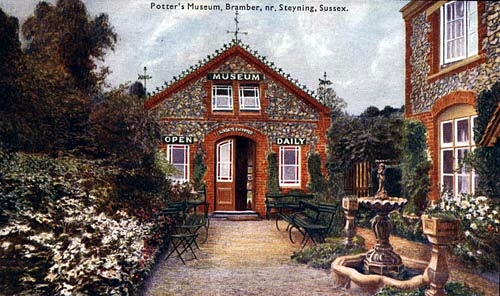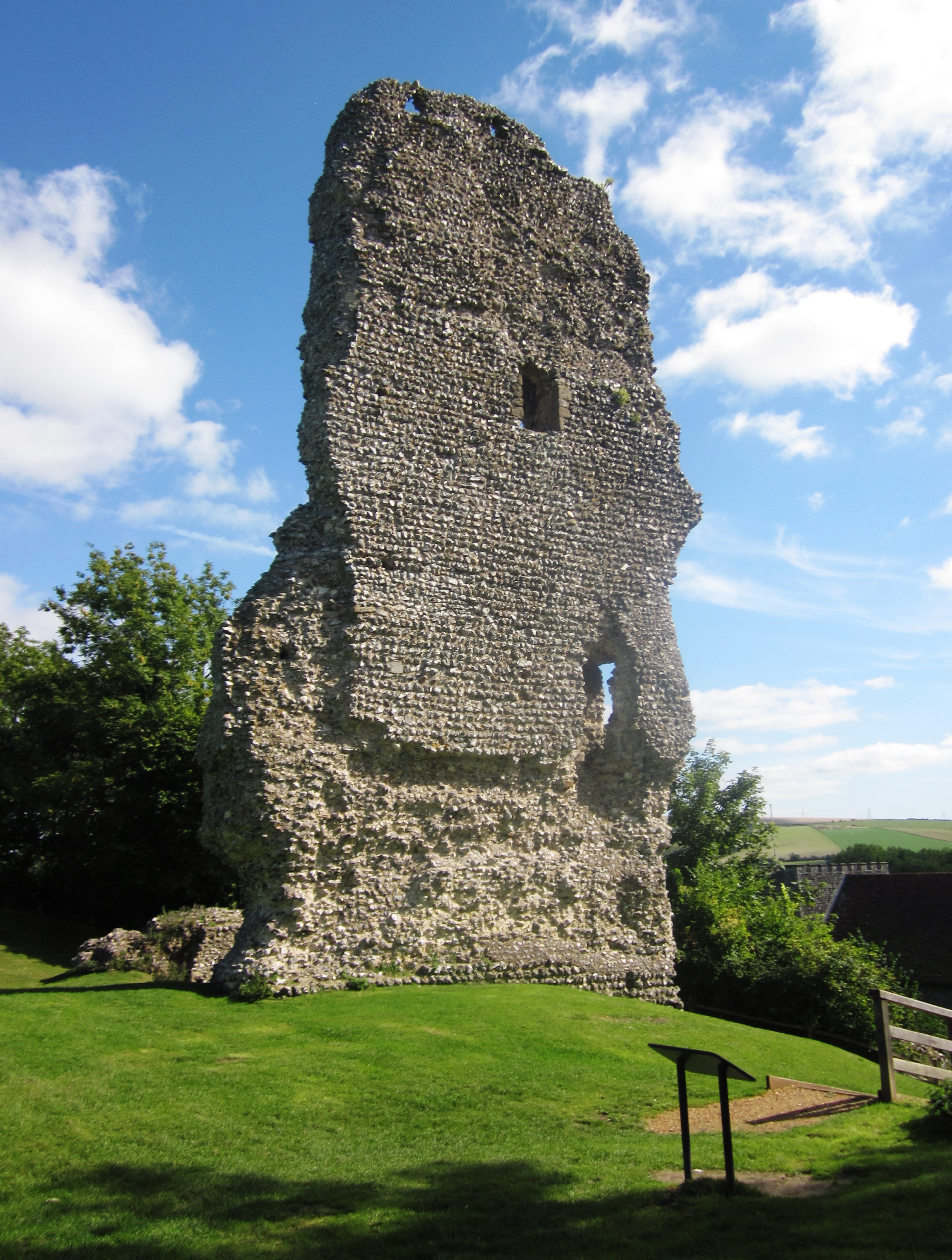|
Bramber Railway Station
Bramber was a railway station in England on the Steyning Line which served the village of Bramber. The station was patronised by tourists visiting nearby Bramber Castle, Potter's Museum and the village. In order to accommodate the special excursion trains the station platforms were extra long. The railway closed as a result of the Beeching Axe The Beeching cuts (also Beeching Axe) was a plan to increase the efficiency of the nationalised railway system in Great Britain. The plan was outlined in two reports: ''The Reshaping of British Railways'' (1963) and ''The Development of the ... in 1966. Nothing remains of the station today, which now forms part of a traffic roundabout. Gallery File:Bramber rail station 1884443 005e425b.jpg, A view in 1964 Image:Bramber Railway Station 2.jpg, Former station site on Steyning Bypass See also * List of closed railway stations in Britain References {{reflist Disused railway stations in West Sussex Railway stations ... [...More Info...] [...Related Items...] OR: [Wikipedia] [Google] [Baidu] |
Bramber
Bramber is a former manor, village and civil parish in the Horsham District of West Sussex, England. It has a ruined mediaeval castle which was the ''caput'' of a large feudal barony. Bramber is located on the northern edge of the South Downs and on the west side of the River Adur. Nearby are the communities of Steyning to the west and Upper Beeding to the east, and the other side of the river. The closest historical connection, however, is with the village of Botolphs to the south. The ecclesiastical parishes of Bramber and Botolphs were united possibly as early as 1526, but certainly by 1534British History Onlinentry here with the priest living at Botolphs. Later the priest's official residence became the imposing Bramber mansion and landmark now called "Burletts" and located on Clays Hill. The union of the civil parish councils followed 400 years later in 1933. Castle Bramber was the ''caput'' of a large feudal barony A feudal baron is a vassal holding a heritable fief ... [...More Info...] [...Related Items...] OR: [Wikipedia] [Google] [Baidu] |
Beeching Axe
The Beeching cuts (also Beeching Axe) was a plan to increase the efficiency of the nationalised railway system in Great Britain. The plan was outlined in two reports: ''The Reshaping of British Railways'' (1963) and ''The Development of the Major Railway Trunk Routes'' (1965), written by Richard Beeching and published by the British Railways Board. The first report identified 2,363 stations and of railway line for closure, amounting to 55% of stations, 30% of route miles, and 67,700 British Rail positions, with an objective of stemming the large losses being incurred during a period of increasing competition from road transport and reducing the rail subsidies necessary to keep the network running. The second report identified a small number of major routes for significant investment. The 1963 report also recommended some less well-publicised changes, including a switch to the now-standard practice of containerisation for rail freight, and the replacement of some services wit ... [...More Info...] [...Related Items...] OR: [Wikipedia] [Google] [Baidu] |
Beeching Closures In England
Beeching is an English surname. Either a derivative of the old English ''bece'', ''bæce'' "stream", hence "dweller by the stream" or of the old English ''bece'' "beech-tree" hence "dweller by the beech tree".''Oxford Dictionary of English Surnames'', Reaney & Wilson, Oxford University Press 2005 People called Beeching include:- * Henry Charles Beeching (1859–1919) clergyman, author and poet * Jack Beeching (John Charles Stuart Beeching) (1922–2001), British poet * Richard Beeching (1913–1985), chairman of British Railways * Thomas Beeching (1900–1971), English soldier and cricketer * Vicky Beeching (Victoria Louise Beeching) (born 1979), British-born Christian singer See also * Beeching Axe The Beeching cuts (also Beeching Axe) was a plan to increase the efficiency of the nationalised railway system in Great Britain. The plan was outlined in two reports: ''The Reshaping of British Railways'' (1963) and ''The Development of the ..., informal name for th ... [...More Info...] [...Related Items...] OR: [Wikipedia] [Google] [Baidu] |
Railway Stations In Great Britain Closed In 1966
Rail transport (also known as train transport) is a means of transport that transfers passengers and goods on wheeled vehicles running on rails, which are incorporated in tracks. In contrast to road transport, where the vehicles run on a prepared flat surface, rail vehicles (rolling stock) are directionally guided by the tracks on which they run. Tracks usually consist of steel rails, installed on sleepers (ties) set in ballast, on which the rolling stock, usually fitted with metal wheels, moves. Other variations are also possible, such as "slab track", in which the rails are fastened to a concrete foundation resting on a prepared subsurface. Rolling stock in a rail transport system generally encounters lower frictional resistance than rubber-tyred road vehicles, so passenger and freight cars (carriages and wagons) can be coupled into longer trains. The operation is carried out by a railway company, providing transport between train stations or freight customer facilit ... [...More Info...] [...Related Items...] OR: [Wikipedia] [Google] [Baidu] |
Railway Stations In Great Britain Opened In 1861
Rail transport (also known as train transport) is a means of transport that transfers passengers and goods on wheeled vehicles running on rails, which are incorporated in tracks. In contrast to road transport, where the vehicles run on a prepared flat surface, rail vehicles (rolling stock) are directionally guided by the tracks on which they run. Tracks usually consist of steel rails, installed on sleepers (ties) set in ballast, on which the rolling stock, usually fitted with metal wheels, moves. Other variations are also possible, such as "slab track", in which the rails are fastened to a concrete foundation resting on a prepared subsurface. Rolling stock in a rail transport system generally encounters lower frictional resistance than rubber-tyred road vehicles, so passenger and freight cars (carriages and wagons) can be coupled into longer trains. The operation is carried out by a railway company, providing transport between train stations or freight customer facil ... [...More Info...] [...Related Items...] OR: [Wikipedia] [Google] [Baidu] |
List Of Closed Railway Stations In Britain
A ''list'' is any set of items in a row. List or lists may also refer to: People * List (surname) Organizations * List College, an undergraduate division of the Jewish Theological Seminary of America * SC Germania List, German rugby union club Other uses * Angle of list, the leaning to either port or starboard of a ship * List (information), an ordered collection of pieces of information ** List (abstract data type), a method to organize data in computer science * List on Sylt, previously called List, the northernmost village in Germany, on the island of Sylt * ''List'', an alternative term for ''roll'' in flight dynamics * To ''list'' a building, etc., in the UK it means to designate it a listed building that may not be altered without permission * Lists (jousting), the barriers used to designate the tournament area where medieval knights jousted * ''The Book of Lists'', an American series of books with unusual lists See also * The List (other) * Listing (di ... [...More Info...] [...Related Items...] OR: [Wikipedia] [Google] [Baidu] |
Shoreham-by-Sea Railway Station
Shoreham-by-Sea railway station serves the town of Shoreham-by-Sea in the county of West Sussex, and also serves the nearby Shoreham Airport. The station and the majority of trains serving it are operated by Govia Thameslink Railway, primarily under its Southern brand, but also as Thameslink. It is down the line from Brighton. Both platforms can handle trains with up to 12 coaches. History The original Shoreham station was a terminus built by the London & Brighton Railway and was opened on 11 May 1840. The original building was demolished in 1845 when the Brighton and Chichester Railway opened its line to Worthing railway station. Both railways merged with others in July 1846 to become the London, Brighton & South Coast Railway. Facilities The station has a staffed ticket office which is open for the majority of the day on all days as well as self-service ticket machines available. The station also has a passenger waiting room, café and toilets which are open when the sta ... [...More Info...] [...Related Items...] OR: [Wikipedia] [Google] [Baidu] |
Steyning Railway Station
Steyning railway station was on the Steyning Line which served the small market town of Steyning. Station opening and development The arrival of the station accelerated residential development in the area and some houses were constructed by the railway contractor to the west of the station. Workshops constructed by the contractor survived as industrial units until their demolition after 1953. In addition to passengers, the station's main traffic was animals, notably horses, for the Wednesday cattle market in "Market Field". The single-track line was doubled by 1879. In 1912 the station master appointed by the LBSCR was Charles Holden, father of the past President of the Bluebell Railway Bernard Holden who also lived at the station-master's house. Closed The station closed as a result of the Beeching Axe in 1966 and was demolished soon after closure. The site is now occupied by the new alignment of the A283 Steyning-by-pass. Only the old warehouse buildingview building, lo ... [...More Info...] [...Related Items...] OR: [Wikipedia] [Google] [Baidu] |
Walter Potter
Walter Potter (2 July 1835 – 21 May 1918) was an English taxidermist noted for his anthropomorphic dioramas featuring mounted animals mimicking human life, which he displayed at his museum in Bramber, Sussex, England. The exhibition was a well-known and popular example of " Victorian whimsy" for many years, even after Potter's death; however enthusiasm for such entertainments waned in the twentieth century, and his collection was finally dispersed in 2003. Early life and popularity Walter Potter's family ran The White Lion pub in Bramber. Potter left school at the age of fourteen and began creating taxidermy pieces as a way to encourage people to visit the family's establishment. His first attempt at taxidermy was to preserve the body of his own pet canary when he was a teenager. At the age of 19, inspired by his sister, Jane, who showed him an illustrated book of nursery rhymes, Potter produced what was to become the centrepiece of his museum, a diorama of "The Death and Bur ... [...More Info...] [...Related Items...] OR: [Wikipedia] [Google] [Baidu] |
Horsham (district)
Horsham is a local government district in West Sussex, England. Its council is based in Horsham. The district borders those of Crawley, Mid Sussex, Mole Valley, Chichester, Arun and Adur, and the unitary authority of Brighton & Hove. The district was formed on 1 April 1974, under the Local Government Act 1972, by the merger of Horsham urban district along with Chanctonbury Rural District and Horsham Rural District. accessed Dec 2017. On a programme in 2007, the Horsham district was ... [...More Info...] [...Related Items...] OR: [Wikipedia] [Google] [Baidu] |
Bramber Castle
Bramber Castle is a Norman motte-and-bailey castle formerly the ''caput'' of the large feudal barony of Bramber long held by the Braose family. It is situated in the village of Bramber, West Sussex, near the town of Steyning, overlooking the River Adur. History Surveys indicate the Normans were the first to build a fortification in the area, around 1070. It served as the administrative hub of the newly created Rape of Bramber, and controlled the River Adur estuary. The castle was held by William de Braose, 1st Lord of Bramber, whose family originated from Falaise. Except for a short period when it was confiscated by King John (1199–1216), the castle remained in the de Braose family, until the male line died out in 1326, and it passed to the Mowbrays. Bramber was one of the poorest parts of Sussex, and while it remained a centre of administration, the Mowbrays did not live there; by the 1550s, it was recorded as 'the late castle', used for grazing. During the First Eng ... [...More Info...] [...Related Items...] OR: [Wikipedia] [Google] [Baidu] |





